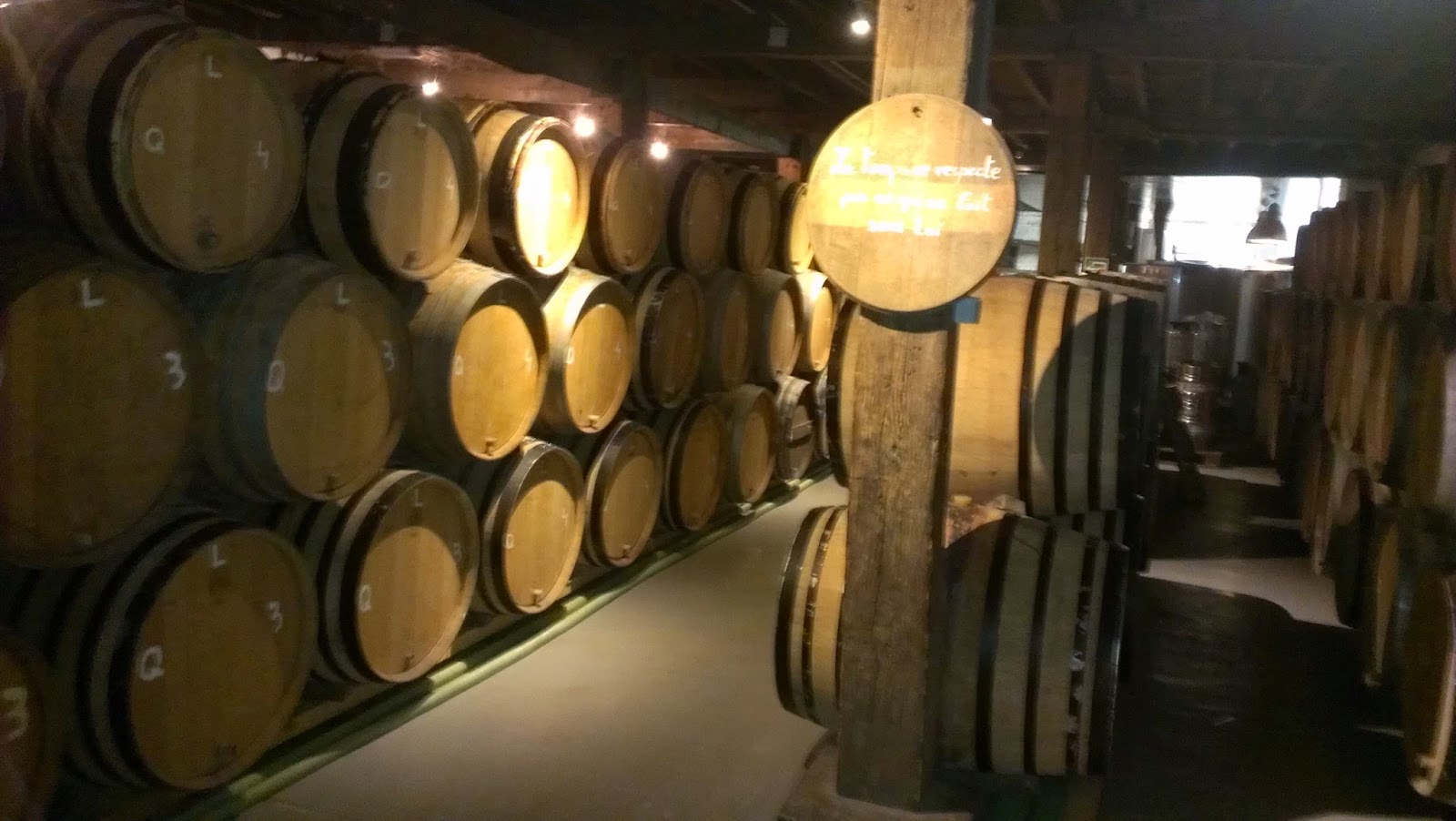Last time, I discussed Cantillon's beer from a process/historical perspective, and what about those make them different from most of the other breweries I've visited. Today, I want to delve more into the experience of touring the brewery.
Unlike most production breweries, the tour of Cantillon is entirely self-guided. The staff provide a detailed pamphlet which contains all the information a beer-obsessed visitor could possibly want to know - both about the brewery itself, and the various pieces of equipment that comprise it. Fair warning, this post will be quite picture-heavy!
 |
| The mash tun. |
Cantillon's brewhouse is vertical, spanning three levels. The ground floor contains the mash tun, a hop filter, an a couple of intermediary vats used when wort is being pumped between various places.
 |
The grain crusher.
|
 |
| A close look at the mechanism powering the grain crusher. |
The second level houses the grain crushing machine and the 2 kettles, as well as the hot liquor tank.
 |
| Temporary barrel storage. |
The third level is the granary - where the wheat and barley used in the brewing process are stored. During the offseason, it is instead used to store extra barrels.
 |
| The beautiful copper coolship. |
Half a level up from the granary is the coolship. Wort is pumped here to cool after the boil. This thing is massive, entirely riveted, and beautiful. The large surface area helps cool the wort down and allows for contact with naturally-occurring wild yeasts and bacteria.
 |
| The fermentation vat. |
Back down the half-stairs, the cooled wort is pumped into this stainless steel vat for study and measurement. It is then transferred into oak barrels to begin fermentation.
 |
| Row upon row of barrels filled with aging/fermenting lambic. |
The warehouse above the tasting room and reception contains hundreds of barrels of aging lambic. Since the secondary fermentation process for Cantillon's lambic takes about 3 years, this warehouse is almost always filled to capacity with sealed oak barrels.
 |
| The very modern bottling machine. |
Cantillon's one major concession to the modern brewing movement is its use of this automatic bottling machine. Cantillon's bottles are an oddity amongst beer - they're both corked and crown-capped. Once bottled, the beer is stored on its side for several months to allow for refermentation of the new beer added during the blending process. I forgot to grab a picture, but right behind this machine is a wall lined with laid-down bottles, stacked several feet high.
 |
| Prices and availability. |
Probably the biggest surprise about visiting the brewery was learning how reasonably priced the final product is! A 75 cl (wine-format) bottle of the gueuze can be had for just 5.50 EUR (~$7 US). I opted for a sampler pack of 3 37.5 cl bottles, which was something like 12 EUR. A beer of this craft and quality would probably go for double the price in the US, at minimum.
 |
| The tasting. |
Also included in the 7 EUR tour price is a very interesting tasting experience. You're allotted two pours: one is your choice of whatever bottle they've opened (generally the gueuze, kriek, and framboise are available). The second is a taste of some unblended lambic. This was thin, dry, woody, and very cereal-malty, with only a small amount of sourness.
 |
| The famous sign. |
What more can be said about Cantillon? It's a fabulous piece of history - not just in terms of the venerable building, the traditional equipment and processes, or even the beer. Rather, the brewery proper feels very much set against a lot of the trends of modern microbrewing - in its slow, deliberate pace of craftsmanship and the subtlely wrought by years of aging. It functions at once as a museum, a brewery, and a window into both beer's past and its possible future.
Brussels is a fine city to visit as a tourist, with much to recommend it, but the experience of touring Cantillon was my favorite part of the entire trip. I hope it's clear why at this point.











yay, photos!
ReplyDelete